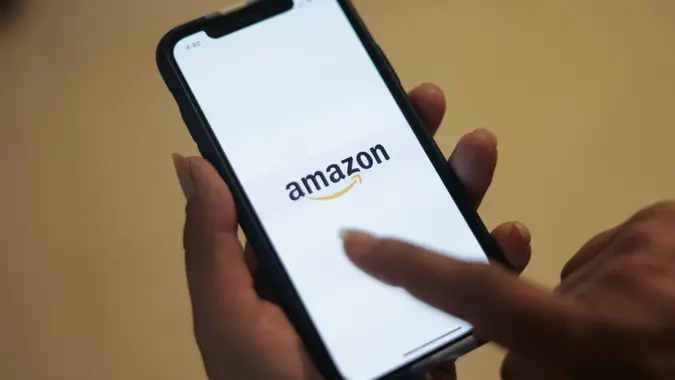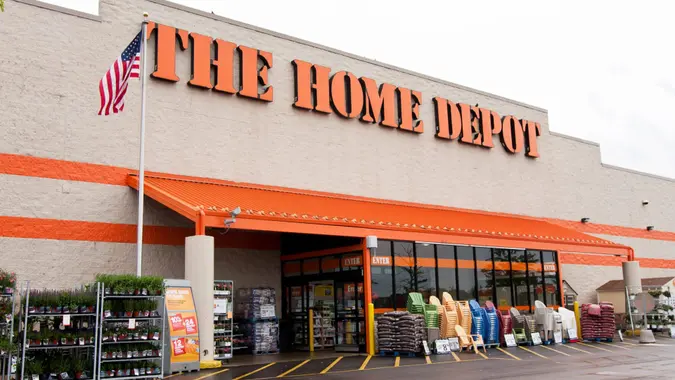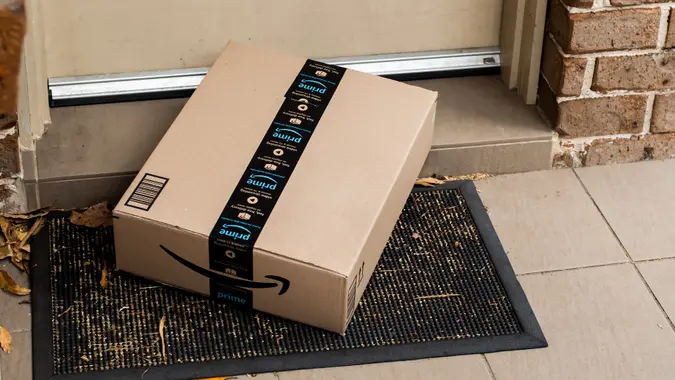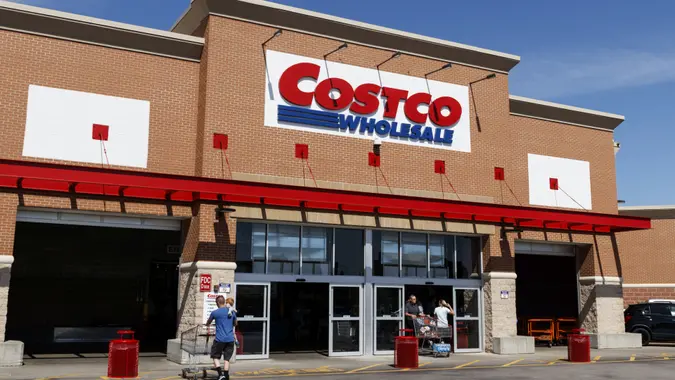Triangle Scams on Amazon: How To Spot and Avoid These Schemes

Commitment to Our Readers
GOBankingRates' editorial team is committed to bringing you unbiased reviews and information. We use data-driven methodologies to evaluate financial products and services - our reviews and ratings are not influenced by advertisers. You can read more about our editorial guidelines and our products and services review methodology.

20 Years
Helping You Live Richer

Reviewed
by Experts

Trusted by
Millions of Readers
While online shopping is convenient, it unfortunately also comes with risks. One such risk is becoming the victim of a “triangle scam,” also know as triangulation fraud.
Never heard of it? Don’t worry, we’ll break down what it is, how to spot one, and how you can avoid becoming a victim of a triangle scheme.
What Is a Triangle Scam?
A triangle scam is a type of fraud that involves three parties: the scammer, the unsuspecting buyer, and an innocent third-party seller. The scam typically unfolds as follows:
- The Scammer: The fraudster steals or acquires someone’s credit card information.
- The Buyer: The scammer lists popular items at suspiciously attractive prices on a platform like Amazon to lure in potential buyers.
- The Seller: Once a buyer makes a purchase, the scammer uses the stolen credit card information to buy the item from a legitimate seller and has it shipped directly to the buyer.
The unsuspecting buyer receives the product and believes everything is legitimate. Meanwhile, the seller ships the item, thinking they have made a legitimate sale.
The scam is often only uncovered when the credit card owner notices unauthorized charges and disputes them, leading to chargebacks. The legitimate seller is left without payment, and the buyer may be implicated in a fraudulent transaction.
How To Spot a Triangle Scam
Recognizing the signs of a triangle scam can help you avoid falling prey to one. Here are some red flags to watch out for:
- Too-Good-To-Be-True Prices: If a deal seems too good to be true, it probably is. Scammers often lure buyers with prices significantly lower than market value.
- New or Unverified Sellers: Be cautious when buying from new or unverified sellers with no feedback or reviews. Scammers often create new accounts to conduct their scams.
- Unusual Payment Requests: Be wary of sellers who request payment through unconventional methods outside of Amazon, such as wire transfers or gift cards.
- Non-Standard Shipping Practices: If the seller insists on shipping methods that are unusual or refuses to provide tracking information, it could be a red flag. Legitimate sellers typically offer reliable shipping options and provide tracking details.
How to avoid a triangle scam
Awareness is the first step in protecting yourself from triangle scams. Here are some practical steps to avoid becoming a victim:
- Research the Seller: Before making a purchase, take the time to research the seller. Check their ratings, read reviews, and look for any history of complaints. Established sellers with positive feedback are less likely to be involved in scams.
- Use Secure Payment Methods: Always use secure payment methods provided by the platform, such as Amazon. Avoid making payments outside of the platform, as this can make it difficult to recover your money if something goes wrong.
- Be Skeptical of Unrealistic Deals: If a deal seems too good to be true, it probably is. Compare prices with other sellers and be cautious of items listed at prices significantly lower than the average market rate.
By understanding what a triangle scam is, recognizing the warning signs, and taking proactive steps to protect yourself, you can significantly reduce the risk of falling victim to such schemes.
More From GOBankingRates
- Nearly 1 in 3 Americans Hit by a Costly Holiday Scam, Norton Survey Shows -- How To Avoid This
- Here's What the Average Social Security Payment Will Be in Winter 2025
- How Middle-Class Earners Are Quietly Becoming Millionaires -- and How You Can, Too
- The Easiest Way to Score $250 for Things You Already Do
 Written by
Written by  Edited by
Edited by 

























